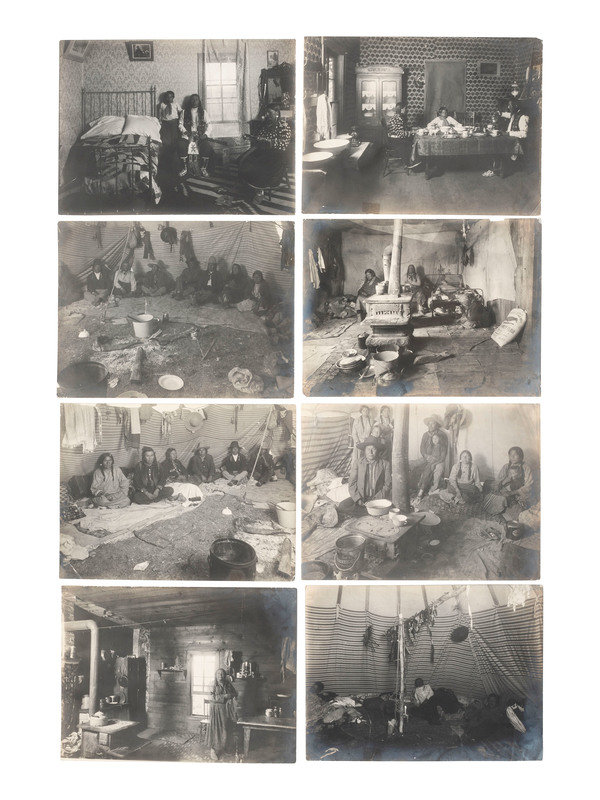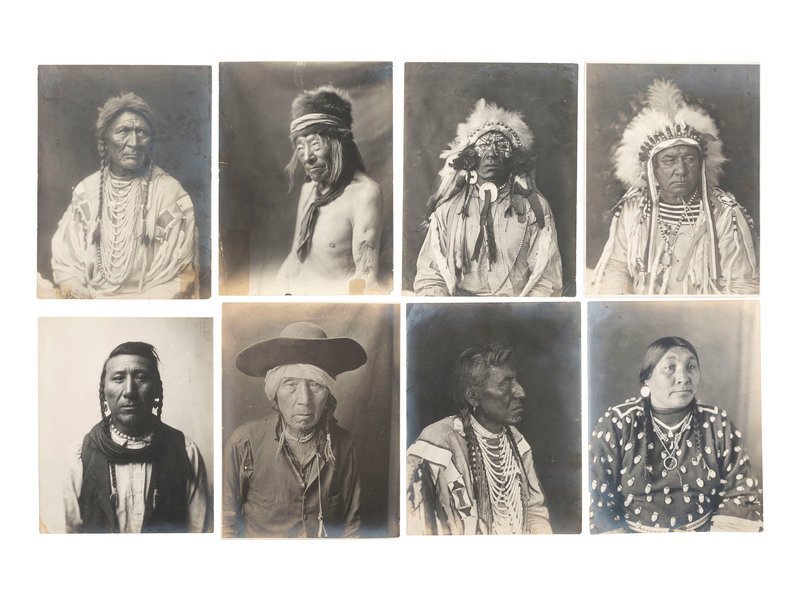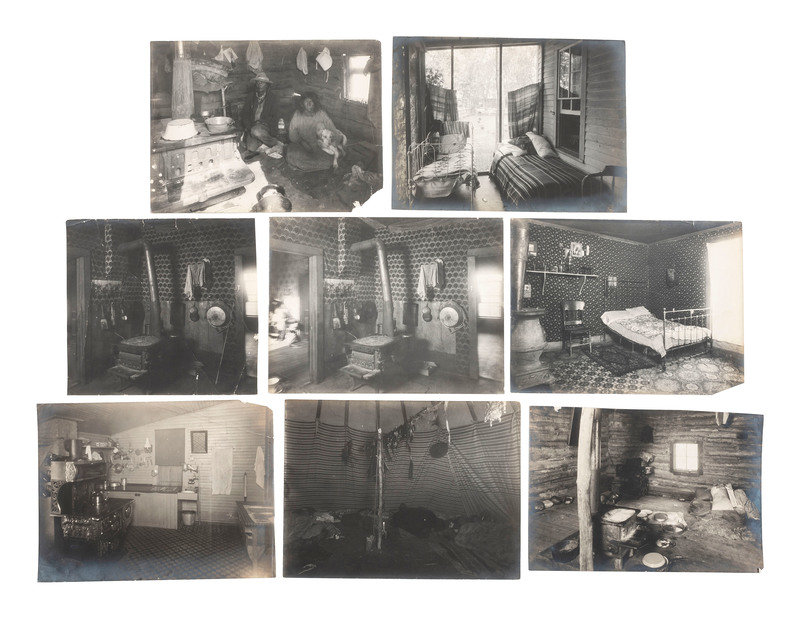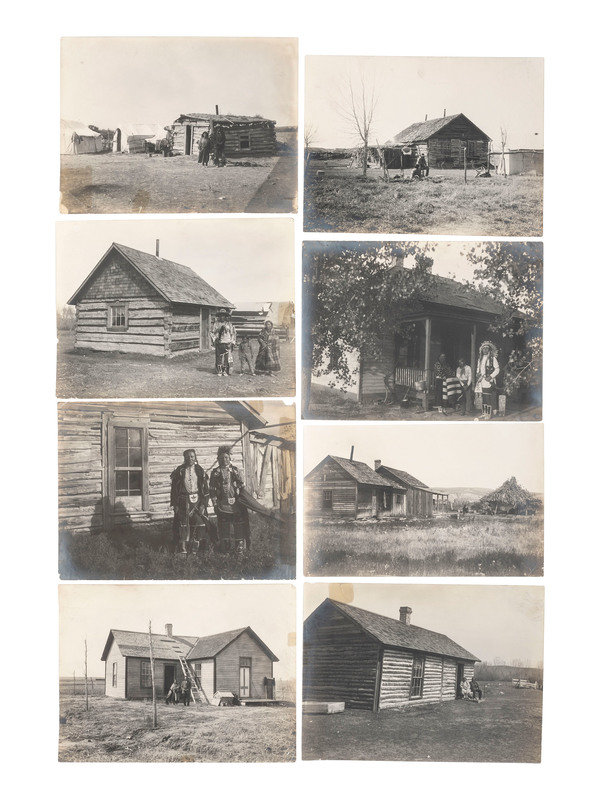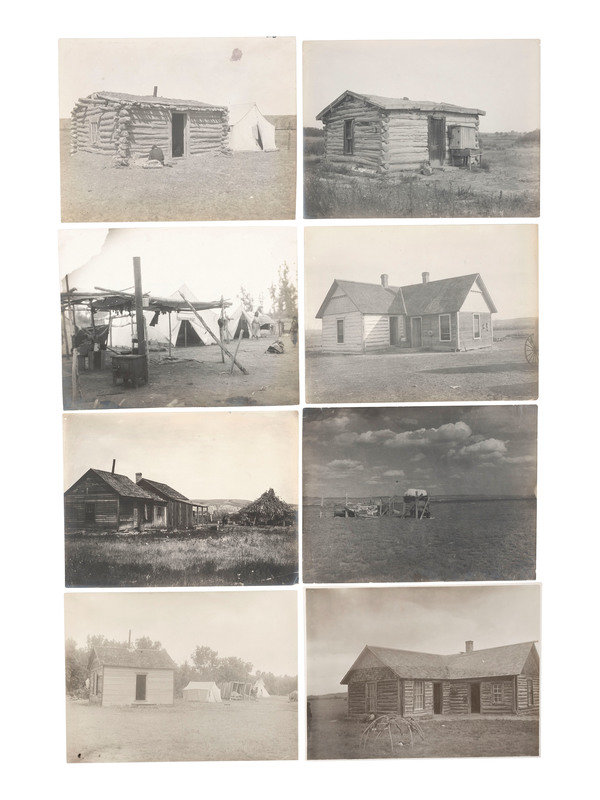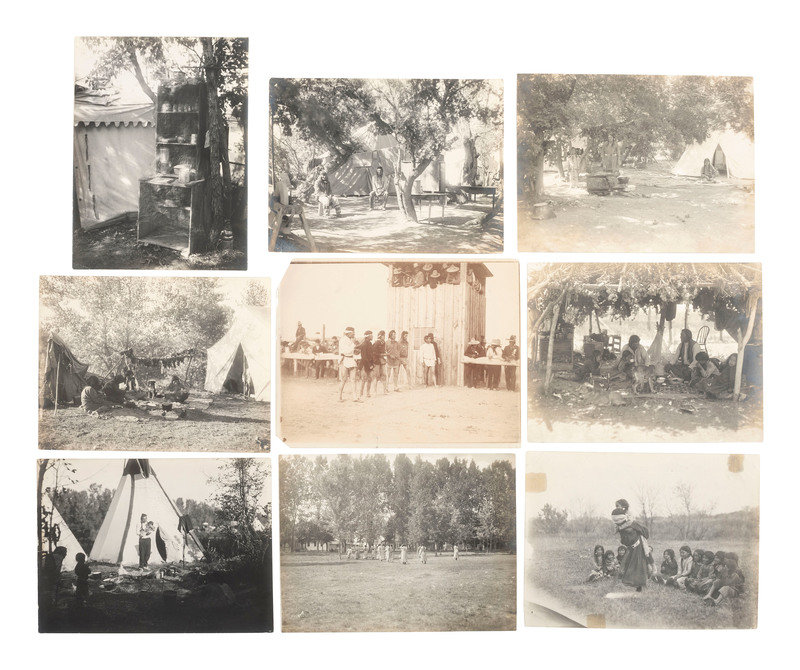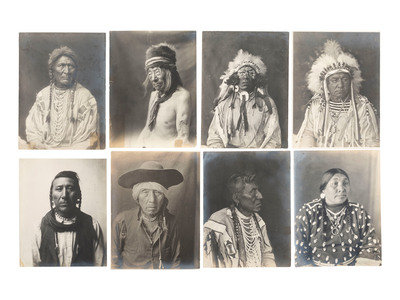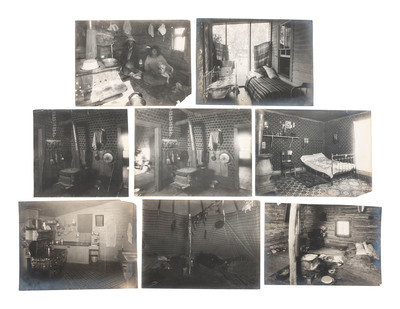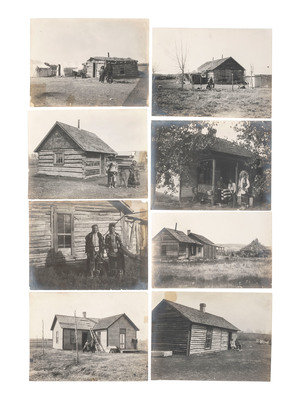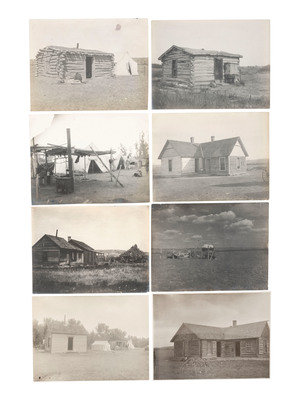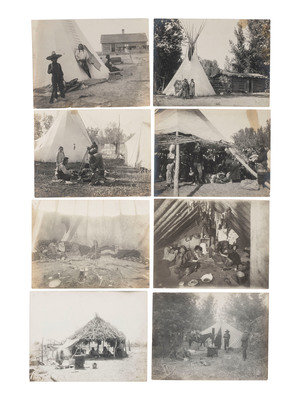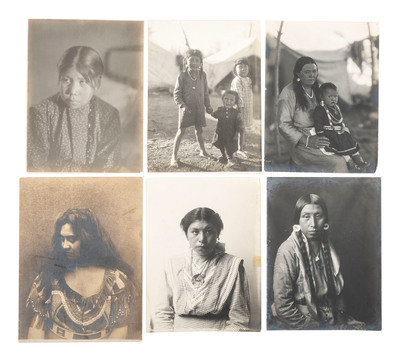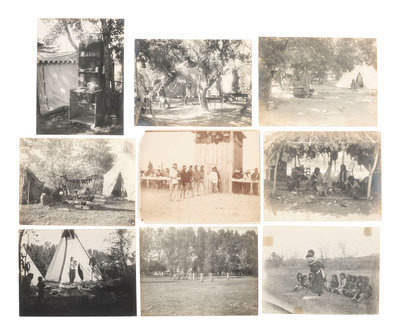Lot 358
[NATIVE AMERICANS]. [THROSSEL, Richard (1882-1933), photographer]. A collection of 75 silver gelatin photographs documenting Crow Indians. Provenance: Estate of Joseph Henry Sharp.
Sale 1095 - American Historical Ephemera & Photography, Featuring Property from the James Milgram, M.D., Collection of Broadsides, Ephemeral Americana & Historical Documents
Day 1 Lots 1-403
Nov 3, 2022
10:00AM ET
Day 2 Lots 404-634
Nov 4, 2022
10:00AM ET
Live / Cincinnati
Own a similar item?
Estimate
$10,000 -
15,000
Price Realized
$11,250
Sold prices are inclusive of Buyer’s Premium
Lot Description
[NATIVE AMERICANS]. [THROSSEL, Richard (1882-1933), photographer]. A collection of 75 silver gelatin photographs documenting Crow Indians. Provenance: Estate of Joseph Henry Sharp.
75 photographs, most approx. 6 x 8 in. Many photographs include a penciled notation to verso, identifying the subject as "Crow," or the scene as "Crow Agency" (many prints with toning, light spotting and soiling, corner and edge wear including some short tears, many with mounting traces on versos and tape repairs). Although lacking period imprints, most, if not all, of the photographs were likely taken by Richard Throssel.
Throssel was born in Marengo, Washington, of French-Canadian and Cree Indian descent. He moved to the Crow reservation in 1902, and in 1905 was adopted by the tribe and given the name Esh Quon Dupahs or "Kills Inside the Camp." He became interested in photography and learned his trade through correspondence schools. In 1905 he met and was briefly instructed by Edward S. Curtis. His closeness with tribal members provided extraordinary opportunity, and with his camera, Throssel covered many aspects of Crow life. (See Albright, 1997. Richard Throssel: Photographer of the Crows.)
Between 1909 and 1911, Throssel was appointed photographer-at-large for the Indian Service, and he lobbied for Indian causes. In 1910, he joined Dr. Ferdinand Shoemaker, a physician with the Bureau of Indian Affairs, in preparing a series of educational slides on Indian health, which became part of a nationwide federal campaign to fight the spread of tuberculosis and trachoma. The images promote healthy lifestyles and caution against sharing utensils and pipes. He was also tasked with documenting the Crow Indians adaptation to a white, European way of life. (Information obtained from the McCracken Research Library, University of Illinois at Urbana-Champaign website, 10 October 2022.) A number of the photographs included in this collection appear to have been used for that campaign.
Images of note include: Interior views of Crow subjects gathered inside teepees, including a photograph taken during a Crow tobacco Society Ceremony, the Bacu' sua. Photographs such as this were used to discourage activities that could spread germs. -- Multiple views of Crow camp life, including several photos documenting the living conditions. Several show Crow men, women, and children at camp, many near teepees and gathered in huts. At least one photograph depicts the Crow eating from the ground, which was used to discourage eating outside in camp settings. -- Multiple views of Crow subjects posed outside their homes, some with teepees located nearby. -- Interior views of the homes, including kitchens and bedrooms, some of which are well-kept and some that are in disrepair, likely meant to represent what was considered healthy versus unhealthy styles of living. Many also capture the Crow families inside their homes. One photograph shows a family eating dinner together in a dining room, titled elsewhere as, Interior of the Best Indian kitchen on the Crow Reservation. -- Interior of tent where tubercular case died. -- 2 photographs of Bear Ground with child, Mary Bear Ground, and Open Eye Old Lady at camp. -- 12 formal portraits of Crow subjects, both male and female, including Curly, George Custer's Crow Scout, Lame Owl, and Wolf.
Together, 75 photographs taken by Richard Throssel, an accepted member of the Crow community. The images present an intimate look at Crow life during the early 20th century.
The Forrest Fenn Collection
Condition Report
Contact Information
Auction Specialist
